LUBRICANTs
COUNTERFEITING
A WORLD WITH LESS FRICTION
Although lubricants do not keep the earth spinning on its axis, they are used on a global scale, reducing friction and allowing the machines of industry to continue producing. In 2019, a total of 36.8 million metric tons (Garside, 2020) were used worldwide. This equates to a swimming pool of 4.25 km by 4.25 km, with a depth of 2 m. According to MarketsAndMarkets (Lubricants Market by Base Oil – Global Forecast to 2025, s.d.), the worldwide lubricants market was valued at 157.6 billion USD in 2020. The market is increasing and should reach 182.6 billion by 2025. It is interesting to note that based on these numbers, the average cost per liter of lubricant oil is approximately $5.
challenges with LUBRICANTS
What are lubricantS?
The majority of lubricants are mineral oils, which have lubricating base oils derived from crude oil. Less common are synthetic oils, which are produced using synthetic hydrocarbons. Indeed, there are even rarer lubricants such as solid lubricants, aqueous lubricants, or even bio-lubricants. Today, they play a much less important role, largely due to a global shift towards greener and more sustainable practices in industry.
After transformation of the raw material, such as crude oil, by petrochemical companies and other transforming industries, lubricants either are stored or go through conditioning. Depending on the industry, lubricants are sold in different container types, including tanks, drums, bottles (plastic or metal) and flexible pouches.

Are there any counterfeits?
The short answer is YES. Lubricant counterfeiting is a real problem and can have catastrophic consequences such as malfunction of machinery, destruction of product, etc. Similar to counterfeiting in the pharmaceutical field, the lubricant industry faces the problem of having lower-quality product being sold in the guise of high-quality labels.

REFILLING
Refilling of original containers is one of the biggest problems lubricant brands face today. Reusing original containers and bottles is fairly easy, and depending on the market, access to used packaging is effortless and inexpensive. For a non-expert, it is extremely difficult to identify containers that have been refilled. Take for instance bottles. For a counterfeiter, it is straightforward to collect used bottles and purchase new caps with a tamper-evident band or security ring. The bottles are refilled and the new caps installed. For a non-expert user, the refilled bottles look like original products.

COUNTERFEIT/COPYING
Slightly more sophisticated are counterfeiters producing packaging from scratch and purchasing original packaging components. There have been known cases of rogue printers printing for both legitimate companies and counterfeiters for the same product. The counterfeiters then stuck the labels on standard lubricant bottles purchased on the market. The result is a counterfeit lubricant bottle that is exceptionally difficult to tell apart from the original, yet with a potentially devastating product inside. The quality of content of counterfeited packaging is of course often far from the original.

BRAND THEFT
Brand theft is less frequent in the lubricant industry but nevertheless existent. Counterfeiters use brand logos, designs and colors and invent a new product that never existed under the original brand. These kinds of counterfeits can of course be easily pinpointed. Despite this, some can slip into markets unnoticed. Due to the large number of locally adapted products available around the world, a customer may have a hard time researching whether theirs is counterfeit or not.
What are the risks of using counterfeited lubricants?
As mentioned before, the main goal of a lubricant is to reduce friction and therefore increase the life of a mechanical system through decreased wear and tear. However, as a secondary function, lubricants often help to decrease heat produced through friction and also allow greater temperature control of the system. Fake lubricants with lesser quality can therefore significantly decrease the life of a machine and cause system overheating, seizing and, in some extreme cases, warping. Using an adapted lubricant and avoiding the use of counterfeits is therefore very important, and brand owners are well aware of their responsibility. There are some instances where brand owners are increasingly aware of the risks. They have in the past been exposed to liability requests from customers claiming that the lubricant quality was lower-grade than promised and they therefore had engine failures.
In the pharmaceutical field, it is not uncommon to find counterfeit products with a quality as good as the original product. However, in the lubricant domain, we have never heard of such practices. In general, lubricant counterfeits contain lower-grade products such as:
- unbranded, cheaper, generic lubricants not satisfying the indicated characteristics and quality
- mixed, diluted or cut lubricants
- used or recycled lubricants.
It is also interesting to note that counterfeiters often add colored dyes to match the original color, making it even harder for customers to spot the different between a genuine and a fake product.

Counterfeit protection solutions
There are four basic approaches being used today to fight the counterfeiting problem in the lubricant field:
The different approaches target different user groups and also serve different purposes.
Overt Security Solutions
Holograms, Optical Variable Inks and Guilloches are just some visible security features giving the consumer a first indication with respect to a product’s authenticity. Generally, an untrained eye is able to identify visible security features. However, they often cannot determine if the visible security feature itself is authentic. And counterfeiters can easily reproduce it. These kinds of features may seem useful to help build trust in the product and the brand but have the drawback that their use indirectly alerts the consumer about the fact that there is a counterfeiting problem. Moreover, it should be noted that none of the visible security features used alone on a product can help to protect against refilling.
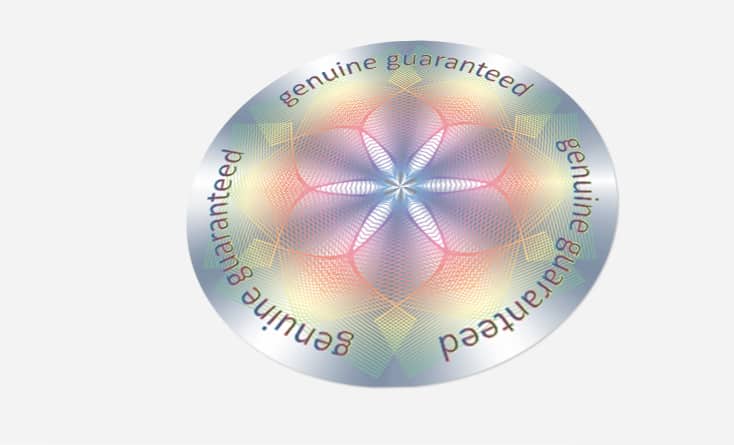

Covert Security Solutions
By definition, covert security features are not visible to the human eye. They usually serve the brand owners, law enforcement and distributors to verify product authenticity. Covert security features, such as invisible inks, special chemical trackers or fluorescent color, usually require some kind of special reading device. The invisibility of covert security features is an inherent characteristic of the solution and increases the overall security. But again, similar to visible security features, covert features alone cannot protect against refilling.
Serialization
QR codes have become an increasingly popular way to track and trace products such as cigarettes and medication. New legislative requirements have made QR codes not only a useful tool but a legal necessity. The lubricant industry is now also looking into using coding such as QR codes or derivative solutions. These will help monitor and control the supply chain, in turn implementing an anti-counterfeiting strategy. We are increasingly seeing very sophisticated matrix codes mixed with holographic elements and special inks being used to fight counterfeits. These kinds of solutions are very costly, and their effectiveness is questionable. Multiple QR codes on the same product, such as on the label, the container itself and the closure, are also used by some companies. The cost can be substantial when applying multiple codes to then link them through an IT system. Nevertheless, the increased complexity makes it again more difficult for counterfeiters.
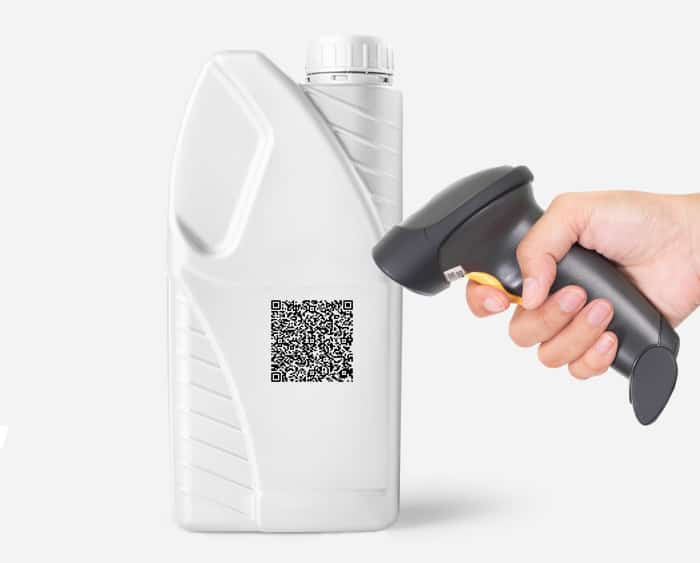
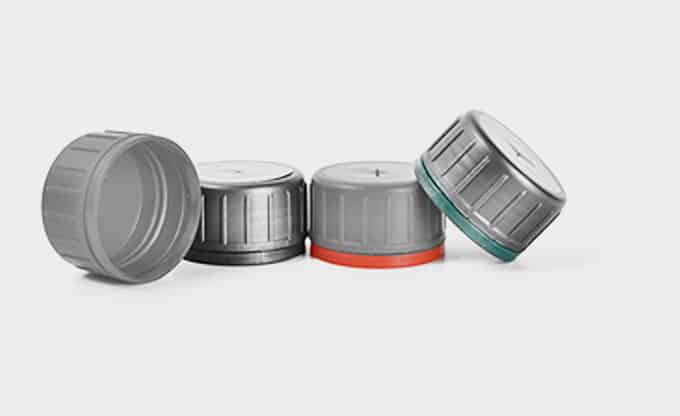
Tamper-Proof Packaging
Packaging components that are destroyed when opening a product are more and more common and primarily serve as an indicator for the consumer that a product is new. Examples of such devices are tamper-proof labels, bottle caps with a tamper-evident band or security ring, bottle seals and tamper-proof folding boxes. It has been shown over the past decades that tamper-proof packaging is also very helpful to fight product refilling.
Hunting for the silver bullet
Securing lubricant products effectively requires a holistic, well-planned strategy. Too often, we see brand owners implement expensive holograms on a label with the hope that it will solve all their counterfeiting problems. We are aware of brand owners in China whose holograms were counterfeited just weeks after their new product hit the market.
We therefore believe that an effective anti-counterfeiting approach should include at least the following:

Securing the supply chain:
Customers only purchase products from actors in a secured supply chain, including the organization and management of authorized dealers, importers and distributors.

Tamper-proof packaging:
Making the reuse and refilling of packaging and more difficult.

Invisible authentication features for enforcement and control:
These make counterfeiting more challenging and allow brand owners and authorized agents to authenticate products and take corrective actions if necessary.
More sophisticated approaches are of course possible and, as in the banknote industry, may increase the overall effectiveness. However, budgetary constraints regularly hinder the execution of more sophisticated strategies.
Legislative requirements for track and trace along the supply chain do not yet exist, and for the moment we are not aware that there is any legislation in the pipeline. This may change in the coming decade. We have seen an increasingly strong political lobby attempting to gain global control over national and international trade.
Solutions proposed by AlpVision
All solutions for the lubricant field proposed by AlpVision are covert, which means that they do not have any visual impact on the design of the product. Depending on the container type, our solutions either are printed – AlpVision Cryptoglyph® – when used on labels, pouches and seals, or exploit the inherent characteristics of the product surface – AlpVision Fingerprint – when used on plastic bottles and caps.

Cryptoglyph®
Cryptoglyph® is a digital invisible marking that is applied to printed products by your current print suppliers with no visible design changes and without the use of special inks or other consumables. Product protection with a Cryptoglyph® is done by adding distributed micro-holes in the varnish layer or solid plain color layer, or by printing microdots on the other parts of the packaging. Cryptoglyph® provides high security and can be combined with traceability systems such as QR codes or bar codes.

AlpVision Fingerprint®
AlpVision Fingerprint® technology leverages the intrinsic microscopic surface irregularities found on products and uses these unique characteristics as the means of authentication. Depending on the manufacturing process, these irregularities may repeat between different products (for instance, for molded products). On top of smartphone-based authentication, AlpVision Fingerprint provides very high security against counterfeiting and seamlessly integrates with common track and trace systems.
Both solutions use a smartphone with a dedicated application for product authentication. This requires little to no user training, and the system gives a clear statement regarding the authenticity of the product under inspection. The smartphone application can further be linked to AlpVision’s Brand Monitoring System (BMS) for authentication and quality control logging. It also provides valuable insights into system use and counterfeiting activities.

PATENTS HELD

PRINTERS WORLDWIDE

PRODUCTS PROTECTED

years of innovation
Counterfeit Products Market

PHARMACEUTICALS
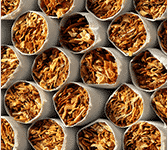
TOBACCO

GOVERNMENT

PRECIOUS METALS

WINE & SPIRITS
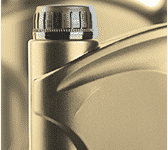
AUTO LUBRICANTS
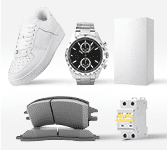
OTHER INDUSTRIES
Our digital invisible technologies for product authentication and counterfeit protection can be applied to a broad range of branded products across a multitude of industries, including household appliances, electromechanical parts (e.g., circuit breakers), agrochemicals (e.g., pesticides), cosmetics, oil & gas (e.g., lubricants), consumer goods, food & beverage and more.
Would you like to see how this technology can be applied to your product?
Contact us!
